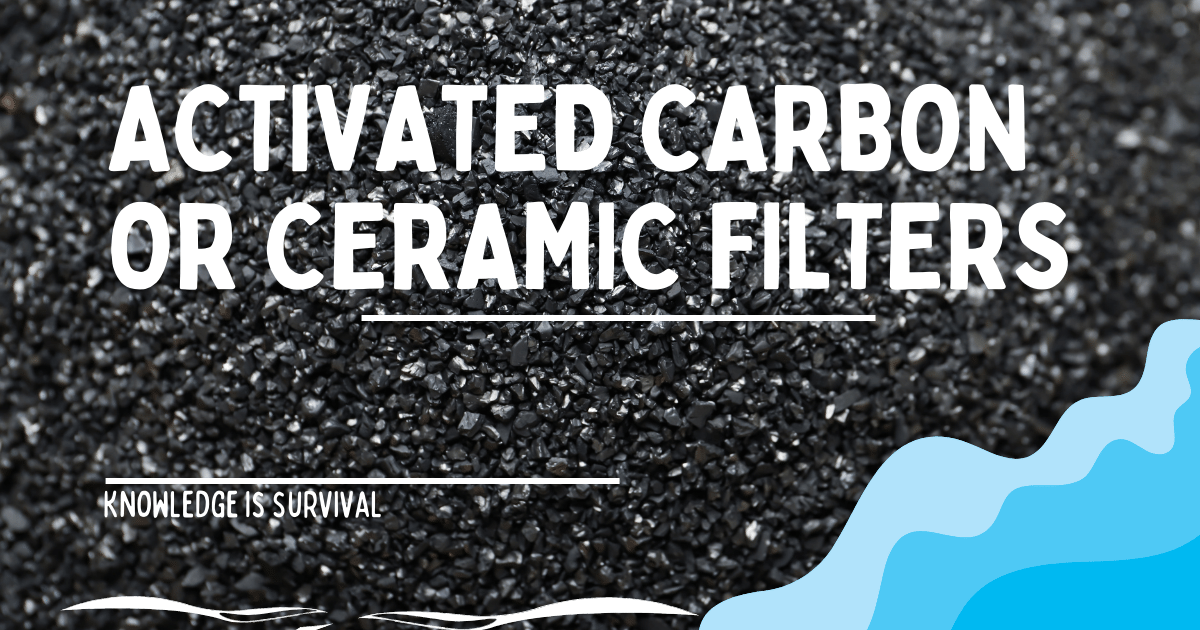Water is essential for human survival, but it can also be a source of harmful impurities. Activated carbon and ceramic filters are two effective methods of removing these impurities from water. In this article, we will explore using activated carbon or ceramic filters to filter out impurities in your drinking water.
Activated carbon
Activated carbon is a form of carbon processed to create small, low-volume pores that increase its surface area and make it highly adsorbent. It is commonly used in water treatment systems, air filters, and purification processes because of its ability to remove impurities and contaminants from liquids or gases. Activated carbon can be made from various sources, such as coal, wood, coconut shells, or petroleum pitches.
Activated carbon can come in various forms, such as powder, granules or pellets. Its powdered form appears as a fine black substance similar to charcoal. Granular activated carbon (GAC) has a larger particle size and is typically used in filtration systems where water flows through the media. Pelletized activated carbon resembles small cylinders or spheres and is often used in air filtration systems. The appearance of activated carbon can vary depending on the source material and manufacturing process used to produce it.
Ceramic filter
Ceramic filters are devices made of porous ceramic material that filter liquids or gases. They work by allowing the fluid to pass through small pores in the ceramic material, which traps impurities and particles. Ceramic filters can be used for various applications, including water filtration, air purification, and industrial processes. They are known for their durability, resistance to corrosion and heat, and ability to remove bacteria and other harmful contaminants from fluids.
Ceramic filters can come in various shapes and sizes depending on their intended use. They are typically made of a porous ceramic material moulded into a specific shape, such as a cylinder or disc. The surface of the filter may be smooth or have small bumps to increase the surface area for filtration. Ceramic filters used for water filtration often have a white or beige colour and may resemble an oversized coffee mug with holes in the bottom. Industrial ceramic filters can be much larger and more complex in design, such as those used in power plants for gas purification.
To filter impurities using an activated carbon or ceramic filter, follow these steps:
- Remove the filter from its packaging and rinse it under running water to remove any loose particles.
- Install the filter into your filtration system according to the manufacturer’s instructions.
- Please turn on the water supply and allow it to run through the filter for a few minutes to flush out any remaining debris.
- Check that there are no leaks in your filtration system before use.
- The filtered water is now ready for consumption or further treatment if necessary.
- Replace the filter as the manufacturer recommends (usually every 3-6 months) to ensure optimal filtration system performance.
Discover additional methods to purify water by exploring these four other options. Employing multiple techniques is an effective approach to guarantee the water’s cleanliness.
Closing remarks
In conclusion, filtering impurities from your drinking water using activated carbon or ceramic filters is a simple and effective way to ensure clean and safe drinking water. These filtration methods help remove chlorine, bacteria, viruses, heavy metals, and other harmful substances that could cause health problems if consumed regularly. Following the steps outlined in this article on using activated carbon or ceramic filters effectively, you can enjoy fresh and pure drinking water at home without worrying about contaminants leading to health risks from dirty water.

